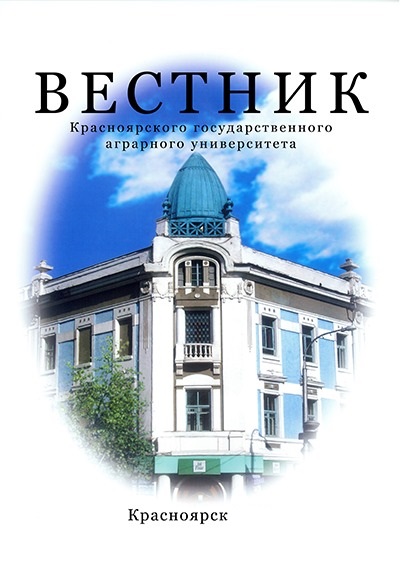The luminescence and lipid peroxidation (LPO) intensities were studied in the samples of the mycelium of luminous fungus Neonothopanus nambi after mechanical damage and incubation under various conditions. By using nitroblue tetrazolium the activation of reactive oxygen species (ROS) in damaged mycelium samples was demonstrated by incubation in a nutrient medium as well as in deionized water. In both cases there was a significant (3-4 orders of magnitude) increase in the intensity of light emission of mycelium. Moreover, a higher level of emission was registered in mycelium samples incubated in deionized water. Based on the data about formation of colored complex with 2-thiobarbituric acid it was found that incubation of the mycelium in culture medium was accompanied by a significant (5-fold) accumulation of malondialdehyde (MDA) in fungal biomass compared to its initial level that favors the development of LPO. During the incubation of the mycelium in deionized water, the MDA changes in the biomass did not reveal. Since under incubation in the water the light emission intensity of mycelium was substantially higher (2-2,5-fold) than that in the mycelium in culture medium, the assumption was made that in this case the main excess of ROS, formed by fungus was neutralized during the luminescent reaction, and it prevented the development of LPO or reduced the probability of this process.
reactive oxygen species, lipid peroxidation, luminescence of fungi
1. Wassink E.C. Luminescence in fungi. In.: Bioluminescence in Action (edited by P.J. Herring). - London: Academic Press, 1978. - P. 171-197.
2. Herring P.J. Luminous fungi // Mycologist. - 1994. - V. 8. - P. 181-183.
3. Desjardin D.E., Oliveira A.G., Stevani C.V. Fungi bioluminescence revisited // Photochem. Photobiol. Sci. - 2008. - V. 7. - P. 170-182.
4. Svetyaschiesya griby i perspektivy ih ispol'zovaniya / G.A. Vydryakova, N.V. Psurceva, N.V. Belova [i dr.] // Mikologiya i fitopatologiya. - 2009. - T. 43. - № 5. - S. 369-375.
5. Eriksson K.-E.L., Blanchette R.A., Ander P. Microbial and enzymatic degradation of wood and wood components. - Berlin: Springer-Verlag, 1990. - 407 p.
6. Biodegradation of lignin by white rot fungi / A. Leonowicz, A. Matuszewska, J. Luterek [et al.]. // Fungal Genet. Biol. - 1999. - V. 27. - P. 175-185.
7. Shimomura O. Bioluminescence: chemical principles and methods. - Singapore: World Scientifc Publishing Co. Pte. Ltd., 2006. - 470 p.
8. Bermudes D., Petersen R.H., Nealson K.N. Low-level bioluminescence detected in Mycena haematopus Basidiocarps // Mycologia. - 1992. - V. 84. - P. 799-802.
9. Lingle W.L. Bioluminescence and ligninolysis during secondary metabolism in the fungus Panellus // J. Biolum. Chemilum. - 1993. - V. 8. - P. 100.
10. Current status of research on fungal bioluminescence: biochemistry and prospects for ecotoxicological application / C.V. Stevani, A.G. Oliveira, L.F. Mendes [et al.] // Photochem. Photobiol. - 2013. - V. 89. - P. 1318-1326.
11. Development of a novel, bioluminescence-based, fungal bioassay for toxicity testing / H.J. Weitz, D. Colin, C.D. Campbell [et al.] // Environ. Microbiol. - 2002. - V. 4. - P. 422-429.
12. Mendes L.F., Stevani C.V. Evaluation of metal toxicity by a modifed method based on the fungus Gerronema viridilucens bioluminescence in agar medium // Environ. Toxicol. Chem. - 2010. - V. 29. - P. 320-326.
13. Baraboy V.A. Mehanizmy stressa i perekisnoe okislenie lipidov // Uspehi sovremennoy biologii. - 1991. - T. 111. - Vyp. 6. - S. 923-932.
14. Vladimirov Yu.A., Proskurnina E.V. Svobodnye radikaly i kletochnaya hemilyuminescenciya // Biohimiya. - 2009. - T. 74. - № 13. - S. 1545-1566.
15. O lyuminescentnoy sisteme svetyaschegosya griba Neonothopanus nambi / V.S. Bondar', A.P. Puzyr', K.V. Purtov [i dr.] // DAN. - 2011. - T. 438. - № 5. - S. 705-707.
16. Bondar V.S., Shimomura O., Gitelson J.I. Luminescence of higher mushrooms // J. Sib. Fed. Univ. Biol. - 2012. - V. 5. - №. 4. - P. 331-351.
17. Hemilyuminescentnoe svechenie tkaney plodovyh tel vysshih gribov / I.I. Gitel'zon, V.S. Bondar', S.E. Medvedeva [i dr.] // DAN. - 2012. - T. 443. - № 5. - S. 624-627.
18. O mehanizme svecheniya griba Neonothopanus nambi / V.S. Bondar', E.K. Rodicheva, S.E. Medvedeva [i dr.] // DAN. - 2013. - T. 449. - № 2. - S. 223-227.
19. Stimulation of luminescence of mycelium of luminous fungus Neonothopanus nambi by ionizing radiation / T.V. Kobzeva, A.R. Melnikov, T.Y. Karogodina [et al.] // Luminescence. - 2014. - V. 29. - P. 703-710.
20. Growth and light emission of luminous basidiomycetes cultivated on solid media and in submerged culture / S.E. Medvedeva, K.S. Artemenko, A.A. Krivosheenko [et al.] // Mycosphere. - 2014. - V. 5. - P. 565-577.
21. Obschaya peroksidaznaya i katalaznaya aktivnosti svetyaschihsya bazidiomicetov Armillaria borealis i Neonothopanus nambi v sravnenii s urovnem svetovoy emissii / O.A. Mogil'naya, N.O. Ronzhin, S.E. Medvedeva [i dr.] // Prikladnaya biohimiya i mikrobiologiya. - 2015. - T. 51. - № 4. - S. 395-401.
22. Anderson G.L., Deinard A.S. The nitrobule tetrazolium (NBT) test: a review // Am. J. Med. Technol. - 1974. - V. 40. - P. 345-353.
23. Stal'naya I.D., Garishvili T.G. Metod opredeleniya malonovogo dial'degida s pomosch'yu tiobarbiturovoy kisloty // Sovremennye metody v biohimii. - M., 1977. - C. 66-68.
24. Zhil'cova Yu.V. Zavisimost' antioksidantno-prooksidantnogo ravnovesiya v makrofitah ot urovnya antropogennoy nagruzki // Tr. BGU. - 2011. - T. 6. - S. 47-54.
25. McElroy W.D., Strehler B.L. Factors infuencing the response of the bioluminescent reaction to adenosine triphosphate // Arch. Biochem. - 1949. - V. 22. - P. 420-433.
26. McElroy W.D., Seliger H.H. Mechanisms of bioluminescent reactions. In: Light and Life. (edited by W.D. McElroy, B. Glass). - Baltimore: Johns Hopkins Press, 1961. - P. 219-257.










